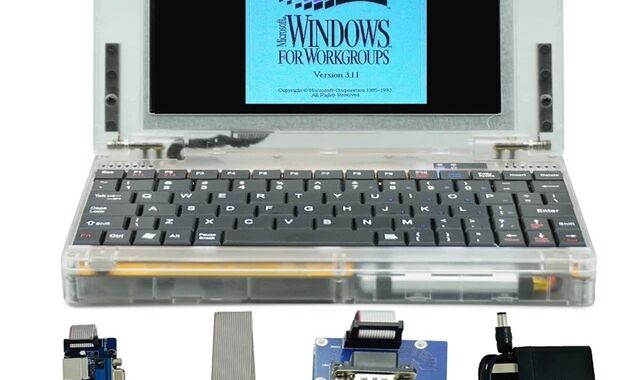- cross-posted to:
- retrogaming@lemmy.world
- cross-posted to:
- retrogaming@lemmy.world
This could be very useful to run really old PC tied commercial and industrial equipment. There is a surprising amount of old systems still keeping our lives running in small niche ways. It could be:
- your school system’s ancient HVAC system
- an old electron microscope in a biology or materials science lab
- an old pc based CNC mill
The fact that this has all the legacy ports of:
- IEEE 1284 parallel printer port
- RS-232 serial port
- a 16 bit ISA slot breakout!
…gives this some of the newest hardware I can think of that still interfaces with old ancient hardware.
Me, dumpster diving 286 computers 2 decades ago to make backup controllers for a very profitable machine.
I wonder if that thing is still operating
I’d be interested in the form factor with like a raspberry pi in there.
Less powerful than that seems like a waste.
The point is not power but hardware compatibility. Emulation only goes so far and many, if not most, weird esoteric hardware systems from the 90s depended on idiosyncracies and strange usage of standard busses and weird interactions of the CPU. Emulation almost always breaks this.
I’ve never had a problem emulating windows 95.
Have you tried emulating it while interfacing with some ancient ISA card?
They sell ISA to USB adapter boards and you can tell the emulator to use the device.
Tell me you’ve never tried it without telling me you’ve never tried it.
I’m sure you’re the first to think of this! You’ll be rich!
Let me Google that for you.
That will add extra latency from USB. Old programs are not likely to be very tolerant of that.
also most of those USB adapters likely won’t support true hardware switch interrupts, Direct Memory Access, or raw bus control to talk to other cards, which almost every special ISA card actually needs at least one of these to function.
i believe the use case is for old tech that require win95/dos …like interfacing with old science instruments
especially at that price point
$200? Jeez.
I got a $32 11" Dell Chromebook last month to use as a video player at work, it’s great. Stuck in a 128GB microSD and it’s better than fine.
And I can listen to the baseball game on it, when I’m not watching Star Trek. 😁
Does your $32 chromebook run dos and windows 95 on bare metal? How is your comment relevant?
deleted by creator
It runs Doom, but unplayable speed. They should have run it as 386DX. Had one from AMD, it was running quite well.
looks like the implemented CPU (ULi M6117C) supports a coprocessor interface, so it is entirely possible that a 387sx equivalent could give it floating point capabilities. it’s probably not electrically implemented on this specific device to expose the interface though. otherwise yeah no FP sucks
While an FPU (Floating Point Unit aka math coprocessor) would be nice, the 386SX is still a 16-bit CPU. The 386DX is a 32-bit CPU (and would still need a 387 for a dedicated FPU). In the 486 line SX meant no FPU, while DX meant FPU inside.
ahhh fuck I forgot about that little stupid memory bus cheat that Intel pulled. they’ve been good at obfuscating their screwing of consumers thru weird naming schemes ever since they started lol
I read this in R2D2’s voice!
My second hand t480 is cheaper than that with 512 gigs of ssd storage and 16 gigs of ram
Gimme gimme gimme that transparent shell
LGR has a nice review of this and a similar machine: https://piped.video/watch?v=6bODiZ5bP84
This is the best summary I could come up with:
Of the many oddities you can buy from Aliexpress, some of the weirdest are the recreations of retro computer systems in semi-modern designs.
We’re most intimately familiar with the Book 8088, a recreation of the original 1981 IBM PC inside a chunky clamshell laptop.
The people behind the Book 8088 are also responsible for the Hand386, which is a bit like a late-80s PC stuck inside an old Palm Pilot or Blackberry, and a second revision of the Book 8088 with more built-in ports and a VGA-capable graphics adapter installed instead of a basic CGA adapter.
Whoever is selling these systems is now back with the Pocket 386, which combines Hand386-style internals with a clamshell design similar to the Book 8088.
The system also includes 8MB of RAM, one of three different replaceable VGA adapters (either a Cirrus Logic CL-GD542X, a TVGA9000i, or a CHIPS F655x5), a Yamaha OPL3 sound card, an 800x480 IPS display panel, a 4,000 mAh battery, and a CompactFlash slot for storage.
But even running off of a CompactFlash card instead of an ancient spinning HDD, expect Windows 95 support to be slow at best, particularly because of the technically inferior 386SX processor and the still-pretty-scanty 8MB of memory.
The original article contains 499 words, the summary contains 203 words. Saved 59%. I’m a bot and I’m open source!
I saw a story about this every day for the last four days. Why this product getting so much pushing?








